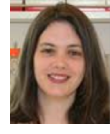From Megan Rokop
 With the help of David Marino, Project Manager at the Broad Institute, Megan Rokop has edited and condensed the survey results from our October STEM meeting into a summary report. Excerpts included in this newsletter cover: With the help of David Marino, Project Manager at the Broad Institute, Megan Rokop has edited and condensed the survey results from our October STEM meeting into a summary report. Excerpts included in this newsletter cover:
- What we would tell Eric Lander if we could give him input about the PCAST Report;
- What we would do with one million dollars for STEM education;
- A few of the most interesting educational resources that people suggested.
If Eric Lander asked you for one thing to add to the PCAST report, what would you recommendation be?
- “Don’t focus only the ‘best and brightest.’ We’ll miss too many good people.”
- “The role of computer science and computational thinking throughout science and math disciplines. How can this be valued through assessment and integrated.”
- “Much work to be done in community colleges. Funds should be there.”
- “Initiatives for highest quality coherent curriculum to serve as models for quality instruction.”
- “Implement a longitudinal study and create a national database to track students – in order to correlate the STEM programs they participate in and length of that participation with their college major and career of choice. We need to scale up programs based on evidence.”
- “Curriculum redesign!”
- “Don’t forget to include early educators in the discussion of improved STEM teacher preparations.”
- “Comparison of other country’s situations like Dr. Okubo mentioned.”
- “Current situation of teachers (business, low salary, etc.)”
- “Update your thoughts about technology/computers in the classroom. There is amore to technology than a computer. The comments about raising money to get resources in STEM schools is unfortunately a very disturbing recommendation.”
- “Explore ways to streamline inefficient educational infrastructure (both federal and local).”
- “Leadership in schools. Needs to be lab and time sensitive.”
- “Students need to be involved and not just students.”
- “Involve communities to promote STEM education; include parents, local communities, and students.”
- “Retaining teachers is just as important as training teachers.”
- “Educate politicians about institutional time constraints. Doing this STEM education successfully requires a generation, i.e. think 20 years. So, stop changing the rules of the game every election cycle.”
If you were given $1 million dollars to give to any one (and only one) aspect of K-12 STEM Education, what would you spend it on?
- “Can I change this to $1 billion? I think really making a change in STEM education requires huge amounts of work, effort, and resources. But if I had $1 million I’d focus on one geographic and academic area to have the greatest impact and the greatest demonstration.”
- “Teacher PD”
- “Supporting STEM in upper elementary.”
- “Develop top-notch curriculum.”
- “Teachers – in-service and pre-service. Teachers are our most valuable resource – they need ongoing development of skills and tools”, and we need to support and honor the best.”
- “Teacher recruitment! It’s incredibly important and with more publication it could be very effective with high quality STEM students.”
- “Allow schools to hire more qualified STEM teachers.”
- “I would provide funds for teachers who work with their students in after school programs like science fair, science Olympiad or math counts.”
- “Experience in 6-K education with STEM professional teachers, and evaluate the effectiveness.”
- “Donate to Kahn Academy.”
- “Reward individual teacher projects.”
- “Modernizing the curriculum.”
- “Professional development for teachers grades 3-9 around inquiry, technology innovation, and alternate assessment.”
- “Student contests to educate other students via YouTube type videos.”
Please list any STEM Ed-related resource/opportunity you would recommend to a K-12 student or teacher who asked you personally for such recommendations.
Back to newsletter |